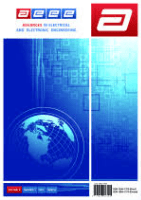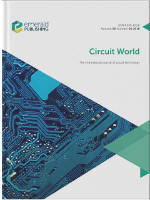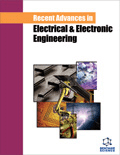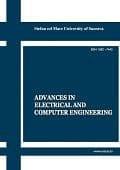
Advances in Electrical and Electronic Engineering
Scope & Guideline
Navigating the Frontiers of Electrical Innovation
Introduction
Aims and Scopes
- Renewable Energy Systems:
Research on the design, optimization, and control of renewable energy sources, such as wind and solar power systems, focusing on improving efficiency and integration with existing power grids. - Control Systems and Automation:
Development of advanced control strategies for dynamic systems, including adaptive control, fuzzy logic, and robust control techniques, aimed at enhancing performance and reliability in various applications. - Power Electronics and Conversion Technologies:
Investigation into power electronic converters and their applications, including energy storage systems and renewable energy integration, with an emphasis on efficiency and innovative topologies. - Wireless Communication and Networking:
Exploration of new communication protocols, network optimization, and interference management in wireless systems, particularly focusing on device-to-device (D2D) communication and 5G technologies. - Smart Grids and IoT Integration:
Research on the integration of Internet of Things (IoT) technologies into electrical grids to enhance monitoring, control, and efficiency of energy distribution and consumption. - Machine Learning and Artificial Intelligence Applications:
Application of machine learning and AI techniques in various engineering challenges, including fault detection, predictive maintenance, and system optimization.
Trending and Emerging
- Hybrid and Intelligent Control Systems:
There is an increasing trend towards hybrid control systems that integrate traditional control methods with artificial intelligence to enhance system performance and adaptability. - Smart Energy Management Systems:
Research on advanced energy management systems that utilize IoT and AI for optimizing energy consumption in homes and industries is gaining momentum, driven by the need for efficiency and sustainability. - Advanced Machine Learning Applications:
The application of machine learning techniques in predictive maintenance, fault diagnosis, and system optimization is a growing area, reflecting the industry's shift towards smart solutions. - Wireless Power Transfer Technologies:
Innovations in wireless power transfer methods, including for electric vehicles and consumer electronics, are emerging as a vital area of research, highlighting the demand for convenient energy solutions. - Sustainable Agriculture and IoT Integration:
The integration of IoT technologies in agriculture, particularly for vertical farming and resource management, is becoming increasingly relevant, indicating a cross-disciplinary approach to engineering challenges.
Declining or Waning
- Traditional Analog Circuit Design:
Research on conventional analog circuit design methods has decreased, possibly due to the growing emphasis on digital and mixed-signal circuits in modern applications. - Basic Electromagnetic Theory:
Papers focusing solely on fundamental electromagnetic theory without application to modern technologies are less common, indicating a shift towards practical applications and advanced technologies. - Conventional Power Generation Methods:
Studies centered around traditional fossil fuel-based power generation systems are becoming less prominent, reflecting a broader industry trend towards sustainable and renewable energy solutions. - Static Image Processing Techniques:
The focus on static image processing methods has waned, as the field shifts towards dynamic and real-time applications, particularly with the rise of machine learning and AI. - Basic Theorems in Control Theory:
Papers that only discuss basic theoretical aspects of control systems without practical application or advanced methodologies are seen less frequently, indicating a shift towards more applied research.
Similar Journals

Electrica
Driving innovation and accessibility in electrical research.Electrica is a prominent open access journal dedicated to advancing the field of Electrical and Electronic Engineering. Published by AVES since its inception in 2018, it has rapidly established itself as a crucial platform for disseminating high-quality research and innovative findings within the engineering community. With an ISSN of 2619-9831, Electrica operates under a rigorous peer-review process to maintain its scholarly integrity while promoting accessibility and knowledge sharing. Positioned in the third quartile of the 2023 rankings for Electrical and Electronic Engineering on Scopus, the journal has garnered a significant following, ranked #490 out of 797 in its category, reflecting its growing impact in the field. Researchers, professionals, and students can benefit from the wealth of resources available through this journal, as it not only provides a space for emerging ideas but also fosters collaboration and dialogue among experts. The journal's commitment to disseminating impactful research continues to shape the future of electrical engineering in Turkey and beyond.

CIRCUIT WORLD
Advancing Knowledge in Electrical EngineeringCIRCUIT WORLD, published by Emerald Group Publishing Ltd, is a pivotal academic journal in the fields of Electrical and Electronic Engineering and Industrial and Manufacturing Engineering. Established in 1974, this journal has provided a vital platform for researchers and professionals to disseminate their findings and advancements over nearly five decades. With a notable Q3 ranking in both categorization areas as of 2023, CIRCUIT WORLD emphasizes the importance of innovation and practical applications in engineering. The journal facilitates the exchange of ideas, featuring case studies, reviews, and cutting-edge research that address contemporary challenges in the industry. Although not an open-access journal, it remains dedicated to contributing significantly to the academic community, making it an essential resource for students and professionals committed to advancing their knowledge and expertise in these dynamic fields. With a focus on providing insights into current trends and future directions, CIRCUIT WORLD stands out as a crucial catalyst for scholarly collaboration and innovation.

University Politehnica of Bucharest Scientific Bulletin Series C-Electrical Engineering and Computer Science
Unlocking New Frontiers in Engineering and Computer ScienceThe University Politehnica of Bucharest Scientific Bulletin Series C-Electrical Engineering and Computer Science is an esteemed academic journal dedicated to advancing knowledge in the fields of electrical engineering and computer science. Published by POLYTECHNIC UNIV BUCHAREST, this journal serves as a vital platform for researchers and professionals to share their innovative findings and insights. With an ISSN of 2286-3540 and an E-ISSN of 2286-3559, it has been a beacon of scholarly communication since its inception in 2008. Though currently categorized in Q4 in Electrical and Electronic Engineering, the journal is committed to enhancing its impact within the academic community and industry by fostering research that bridge gaps between theory and practical application. Operating from Romania, the journal emphasizes open access for its readership, ensuring wide dissemination of its content. Researchers, professionals, and students are encouraged to contribute and explore groundbreaking studies, as this journal aims to elevate the discourse and innovation in engineering and computer science.

Electrical Control and Communication Engineering
Empowering research in control systems and communication technologies.Electrical Control and Communication Engineering is a premier Open Access journal dedicated to the vibrant fields of electrical engineering, control systems, and communication technologies. Published by SCIENDO, this journal not only aims to disseminate significant research findings since its inception in 2012 but also fosters a collaborative platform for researchers, professionals, and students from around the globe. With its commitment to high standards and rigorous peer review, the journal seeks to advance the collective understanding of innovative technologies and methodologies in electrical control and communication systems. With an ISSN of 2255-9140 and an E-ISSN of 2255-9159, the journal is gaining visibility and impact within the academic community, encouraging open and accessible scholarship to drive progress in this critical sector. Housed in Warsaw, Poland, it is poised to be an invaluable resource for those engaged in cutting-edge research and applications in electrical and communications engineering.

Revue Roumaine des Sciences Techniques-Serie Electrotechnique et Energetique
Illuminating the path to sustainable energy advancements.Revue Roumaine des Sciences Techniques-Serie Electrotechnique et Energetique is a distinguished journal published by EDITURA ACAD ROMANE, focusing on the vital fields of Electrical and Electronic Engineering and Energy studies. With a notable history since its inception in 1969, this journal serves as a significant platform for disseminating research and advancements in these disciplines, particularly within the context of Romanian and broader European scientific communities. Although it operates on a traditional access model, it maintains relevance with a Q3 quartile ranking as of 2023 in both the Electrical and Electronic Engineering and Energy categories. With its inclusion in Scopus rankings indicating its growing influence, Revue Roumaine des Sciences Techniques actively contributes to the body of knowledge, providing valuable insights and fostering innovations that resonate with researchers, professionals, and students alike. The journal encourages submissions that address contemporary challenges and developments in technology and energy management, facilitating a collaborative exchange of knowledge that is crucial for both academic and practical applications.

Recent Advances in Electrical & Electronic Engineering
Exploring the Frontiers of Electrical & Electronic ResearchRecent Advances in Electrical & Electronic Engineering is a prominent scholarly journal dedicated to publishing cutting-edge research and developments in the fields of electrical and electronic engineering. Published by BENTHAM SCIENCE PUBL LTD, this journal aims to disseminate significant findings that advance knowledge and technology across various disciplines related to electrical and electronic engineering. With an ISSN of 2352-0965 and an E-ISSN of 2352-0973, the journal is accessible to a global audience, facilitating open scholarly discourse. Although it currently holds a Q4 ranking in both electrical and electronic engineering and materials science categories, it contributes to ongoing dialogues critical for advancing innovations within these sectors. Notably, the journal’s convergence years span from 2007 to 2024, securing its continual relevance in an evolving academic landscape. With a commitment to high-quality research, this journal serves as an essential resource for researchers, professionals, and students seeking to stay abreast of advancements and emerging challenges within the realm of electrical and electronic engineering.

IEEE Latin America Transactions
Elevating the Standards of Engineering ScholarshipIEEE Latin America Transactions is a distinguished journal published by the Institute of Electrical and Electronics Engineers (IEEE), focusing on the broad and impactful fields of Computer Science and Electrical and Electronic Engineering. With an ISSN of 1548-0992, this journal serves as a vital platform for scholarly communication, featuring high-quality research articles that contribute to advancements in these technical domains. As of 2023, it holds a commendable Q2 ranking in Computer Science (Miscellaneous) and a Q3 classification in Electrical and Electronic Engineering, reflecting its significant contributions to the field. The journal spans from 2003 to 2024, ensuring a rich archive of contemporary and relevant research. Researchers and professionals can access its articles without open access restrictions, enhancing its visibility and reach across the global scientific community. Set against the backdrop of its operational base in Piscataway, NJ, this journal not only serves as an academic repository but also plays a crucial role in bridging knowledge gaps in Latin America and beyond.

Przeglad Elektrotechniczny
Advancing Knowledge in Electrical and Electronic EngineeringPrzeglad Elektrotechniczny, published by WYDAWNICTWO SIGMA-NOT SP ZOO, is a prominent journal in the field of Electrical and Electronic Engineering, with its ISSN being 0033-2097 and E-ISSN 2449-9544. Established in Poland and in circulation since 1969, this journal has served as a vital platform for disseminating research findings, theoretical advancements, and innovative practices in electrical engineering. With an HIndex that reflects its scholarly impact, it currently holds a Q4 ranking within its category and a notable position on Scopus, ranking #644 out of 797 in Electrical and Electronic Engineering, which places it in the 19th percentile. Although it does not offer open access, the journal persists in fostering academic discourse and providing a repository of knowledge with publication timelines extending from 1969 to 1984 and then continuing from 2005 to 2024. As it seeks to bridge the gap between theory and practice, Przeglad Elektrotechniczny is essential for researchers, professionals, and students striving for excellence in this dynamic and ever-evolving field.

ELECTRICAL ENGINEERING
Advancing Knowledge in Electrical Engineering ExcellenceELECTRICAL ENGINEERING is a distinguished journal published by Springer that addresses the multifaceted challenges and advancements in the field of electrical and electronic engineering. With an impact factor that reflects its significance in the academic community, this journal offers vital insights into emerging technologies and groundbreaking research findings. Operating without open access, it provides a platform for rigorous peer-reviewed articles that span from applied mathematics to engineering disciplines. The journal has established a strong reputation, ranking in the Q2 category for Electrical and Electronic Engineering and Q3 for Applied Mathematics as of 2023, which showcases its commitment to high-quality research. The journal is indexed in Scopus, placing it within the 53rd to 71st percentiles in its respective categories. Researchers, professionals, and students alike will find ELECTRICAL ENGINEERING an invaluable resource for staying abreast of innovations and developments that shape the future of the electrical engineering landscape.

Advances in Electrical and Computer Engineering
Driving Research Forward in Electrical and Computer EngineeringAdvances in Electrical and Computer Engineering is a leading open-access journal published by the University of Suceava, Faculty of Electrical Engineering, since 2007, promoting the dissemination of innovative research in the fields of electrical engineering and computer science. With an ISSN of 1582-7445 and an E-ISSN of 1844-7600, the journal serves as a vital resource for researchers, professionals, and students, contributing to the growth of knowledge and technology in these critical areas. The journal holds a respectable Q3 ranking in both Computer Science and Electrical and Electronic Engineering, reflecting its commitment to quality and relevance in high-impact research. Recognized in Scopus, it ranks #154 out of 232 in General Computer Science and #528 out of 797 in Electrical and Electronic Engineering, indicating its solid standing in the academic community. By providing open access to invaluable research findings, Advances in Electrical and Computer Engineering plays a pivotal role in advancing the frontiers of technology and engineering.